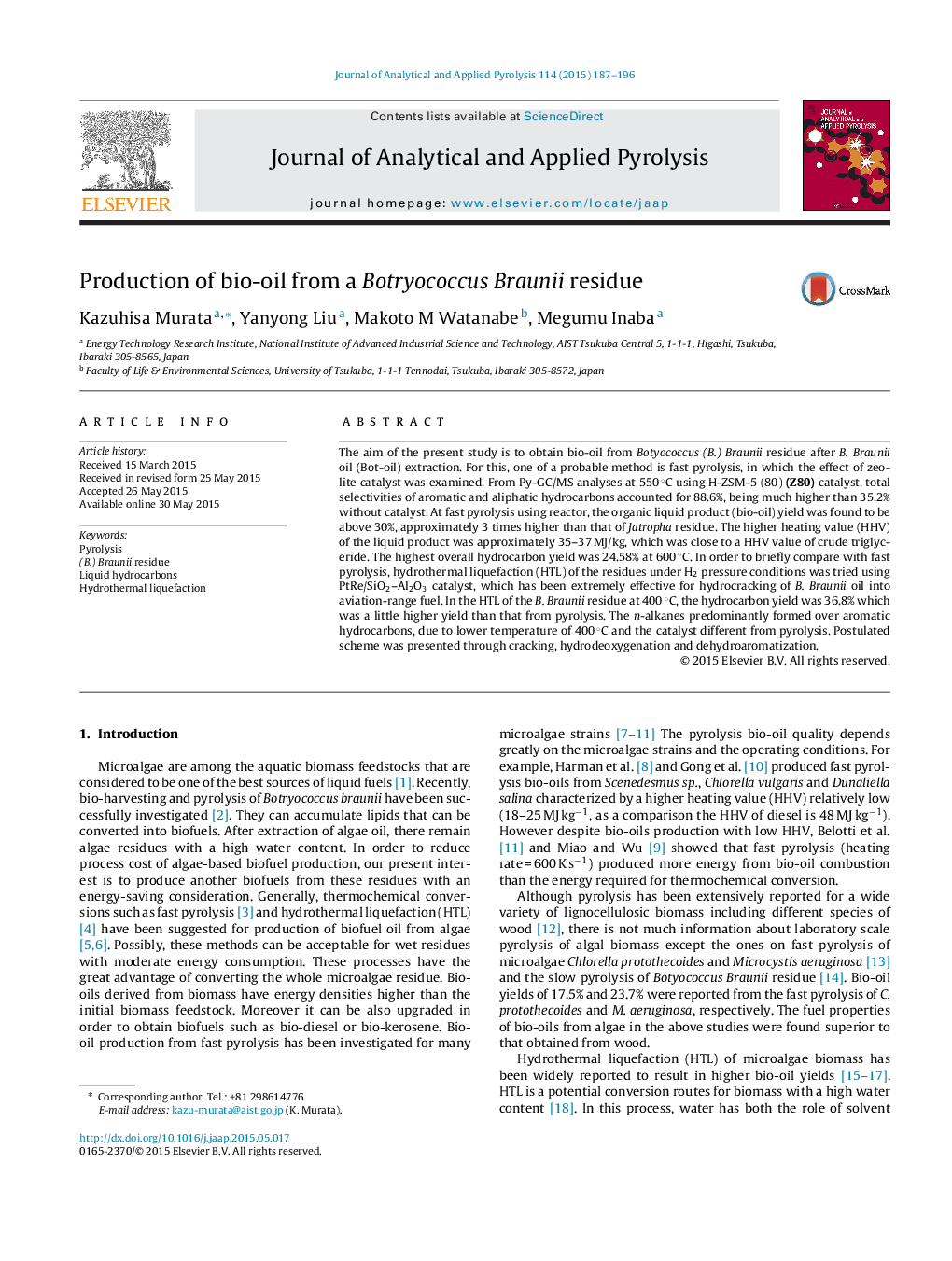| Article ID | Journal | Published Year | Pages | File Type |
|---|---|---|---|---|
| 1196979 | Journal of Analytical and Applied Pyrolysis | 2015 | 10 Pages |
•Renewable green bio-oil can be produced by pyrolysis of Botryococcus (B.) Braunii residue after B. Braunii oil extraction.•Hydrocarbon selectivities accounted for 85–90% and the organic liquid yield was found to be above 30%.•Hydrothermal liquefaction of the B. Braunii residue yielded hydrocarbons of 36.8%.
The aim of the present study is to obtain bio-oil from Botyococcus (B.) Braunii residue after B. Braunii oil (Bot-oil) extraction. For this, one of a probable method is fast pyrolysis, in which the effect of zeolite catalyst was examined. From Py-GC/MS analyses at 550 °C using H-ZSM-5 (80) (Z80) catalyst, total selectivities of aromatic and aliphatic hydrocarbons accounted for 88.6%, being much higher than 35.2% without catalyst. At fast pyrolysis using reactor, the organic liquid product (bio-oil) yield was found to be above 30%, approximately 3 times higher than that of Jatropha residue. The higher heating value (HHV) of the liquid product was approximately 35–37 MJ/kg, which was close to a HHV value of crude triglyceride. The highest overall hydrocarbon yield was 24.58% at 600 °C. In order to briefly compare with fast pyrolysis, hydrothermal liquefaction (HTL) of the residues under H2 pressure conditions was tried using PtRe/SiO2–Al2O3 catalyst, which has been extremely effective for hydrocracking of B. Braunii oil into aviation-range fuel. In the HTL of the B. Braunii residue at 400 °C, the hydrocarbon yield was 36.8% which was a little higher yield than that from pyrolysis. The n-alkanes predominantly formed over aromatic hydrocarbons, due to lower temperature of 400 °C and the catalyst different from pyrolysis. Postulated scheme was presented through cracking, hydrodeoxygenation and dehydroaromatization.
